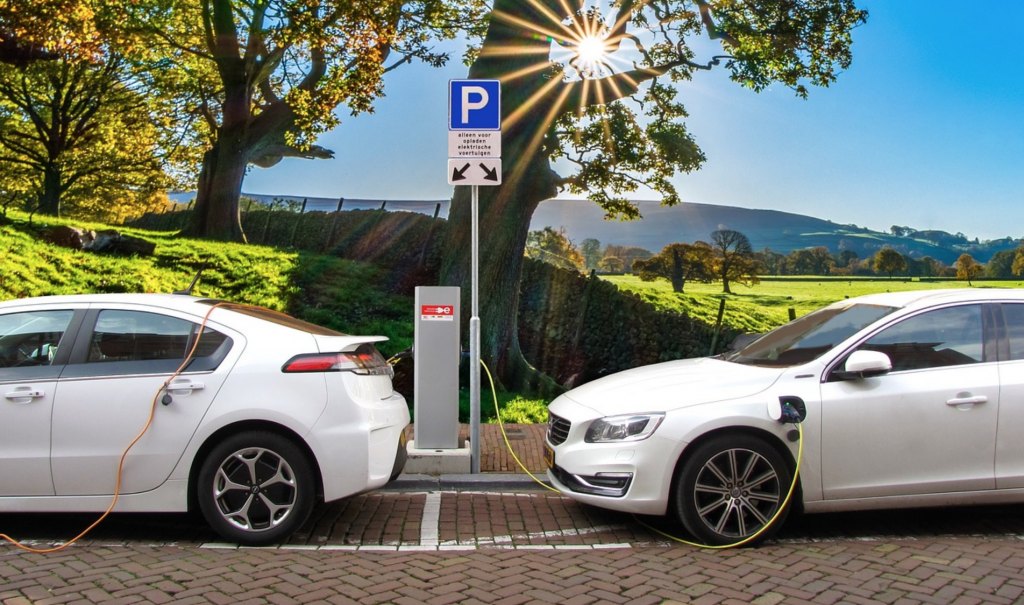While more expensive at the onset when compared to traditional gas-powered vehicles, electric vehicles and hybrids offer families enormous benefits in the long-run. Not only are they more affordable to maintain, automobiles powered via electricity produce zero emissions, reducing the amount of toxic air you and your loved ones are forced to breathe.

For families in the market for a new vehicle, understanding the difference between the varying types of electric-powered cars is a good place to start. Generally speaking, there are three ways to take advantage of advances in electric cars. You can think of them as a continuum that bridges from a gas engine to an all-electric system. The best one for your family will be determined by price and style as well as the powertrain.
Hybrids
The Toyota Prius hatchback, Honda Insight sedan, and Hyundai Ioniq are typical hybrid rides. These cars have an electric system that is powered by its gas engine. This helps it produce enough horsepower without requiring as much fuel as a regular gas engine. As you drive, the gas engine is powering the electric motor which is keeping the battery charged. Top fuel economy is 50 or even 55 miles per gallon. Families can find a larger hybrid sedan such as the Hyundai Sonata Hybrid, Toyota Avalon Hybrid, or Honda Accord Hybrid. Fuel economy for these vehicles is around 40 miles per gallon.
Some other hybrids have several electric motors, including one that boosts horsepower. Consumers who choose these vehicles are trading good gas mileage for high horsepower. Yet this allows them to get a bigger vehicle such as the Toyota Highlander Hybrid or the Chrysler Pacifica Hybrid. Fuel economy is around 28 miles per gallon combined. Luxury plug-in hybrids that are made for families include the Acura MDX hybrid. It earns 27 mpg combined.
Plug-in Hybrids
Combining hybrid technology with a plug-in system, many cars could be called hybrid electric vehicles rather than hybrid gas vehicles. That’s because they do require an electric charge for maximum capability. As a result, these require a home charging station for recharging the battery. They may run for 30 miles strictly on electric power. For many family vehicles, that’s enough to get to school and work and back again.
You’ll find many versions of this car are on the market. The Mercedes-Benz GLE Plug-in Hybrid is a good example of how luxury vehicles use hybrid technology for horsepower. The 463-horsepower plug-in hybrid engine earns 21 mpg when it isn’t charged and 43 mpg when it is charged.
Electric Cars
A true electric vehicle (EV) requires no gasoline and, therefore, has zero emissions. Typical examples include the Nissan Leaf and the Chevrolet Bolt. All Teslas are electric, of course. A Leaf can go 226 miles before needing a charge. The Bolt can go 350 miles, and a Tesla S can go 370 miles. The Tesla X is a family-sized ride with a 325-mile range. It seats seven, and yet it is a purely electric vehicle.
Today’s electric cars charge faster, providing power to get you going again. It’s cheaper for people to pay for electricity than gasoline. Furthermore, electric cars don’t need oil changes or generate as much wear and tear, saving the consumer hundreds or more per year in maintenance costs. An electric vehicle doesn’t need a tune-up due to the lack of mechanical parts.
With the increasing popularity of electric vehicles, the demand for efficient charging solutions has also surged. Commercial-grade EV car chargers from Gobins, for example, provide rapid charging capabilities, allowing EV owners to recharge their vehicles quickly and conveniently. These chargers can also accommodate various EV models and can deliver high-power charging to minimize downtime and maximize driving range. Similarly, home charging stations from providers like Evo Charge have reliable and convenient charging solutions for EV owners, enabling them to recharge their vehicles conveniently overnight or during off-peak hours. With the use of EV chargers, users not only enjoy convenient recharging but also play an important role in sustainability and the environment’s protection.
When shopping for an electric car, consumers can save money with the federal tax credit. However, this has been reduced for many electric cars. Purchasing the Leaf still entitles you to a $7,500 credit, but Teslas and many other electric cars have seen their credits reduced due to the volume sold.
With so many hybrids, plug-in hybrids and true EVs, families have many choices, sizes, and price points. If you aren’t sure what you want, you can take a short-term lease and discover how an electric vehicle can benefit your lifestyle and budget.
















Add Your Comment